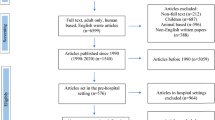Abstract
Purpose
To determine patterns of C1 and C2 vertebral fractures that are associated with blunt cerebrovascular injury (BCVI).
Methods
Retrospective chart review of clinical and imaging reports at a level 1 trauma center over 10 consecutive years was conducted in patients with C1 and C2 fractures. Student t-test and chi-squared analyses were used to determine associations between fracture levels and fracture types with the presence of BCVI on CTA and/or MRI or stroke on CT and/or MRI.
Results
Multilevel fractures were associated with higher incidence of BCVI compared to isolated C1 or C2 fractures (p < 0.01), but not with stroke (p = 0.16). There was no difference in incidence of BCVI or stroke between isolated C1 and isolated C2 fractures (p = 0.46, p = 0.25). Involvement of the transverse foramen (TF) alone was not associated with BCVI or stroke (p = 0.10–0.40, p = 0.34–0.43). However, TF fractures that were comminuted or contained fracture fragment(s) were associated with increased BCVI (p < 0.01, p = 0.02), though not with stroke (p = 0.11, p = 0.09). In addition, high-energy mechanism of injury was also associated with BCVI (p < 0.01) and stroke (p < 0.01).
Conclusion
C1 and C2 fractures are associated with BCVI in the presence of high-energy mechanism of injury, concomitant fractures of other cervical vertebral body levels, comminuted TF fractures, or TF fractures with internal fragments. Attention to these fracture parameters is important in evaluating C1 and C2 fractures for BCVI.






Similar content being viewed by others
Data Availability
The data that support the findings of this study are available upon request.
References
Sethi RKV, Kozin ED, Fagenholz PJ, Lee DJ, Shrime MG, Gray ST (2014) Epidemiological survey of head and neck injuries and trauma in the United States. Otolaryngol - Head Neck Surg (United States) 151(5):776–784. https://doi.org/10.1177/0194599814546112
Miller PR, Fabian TC, Croce MA, et al (2002) Prospective screening for blunt cerebrovascular injuries: analysis of diagnostic modalities and outcomes. In: Ann Surg. https://doi.org/10.1097/00000658-200209000-00015
Franz RW, Willette PA, Wood MJ, Wright ML, Hartman JF (2012) A systematic review and meta-analysis of diagnostic screening criteria for blunt cerebrovascular injuries. J Am Coll Surg. https://doi.org/10.1016/j.jamcollsurg.2011.11.012
Müther M, Sporns PB, Hanning U et al (2020) Diagnostic accuracy of different clinical screening criteria for blunt cerebrovascular injuries compared with liberal state of the art computed tomography angiography in major trauma. J Trauma Acute Care Surg 88(6):789–795. https://doi.org/10.1097/TA.0000000000002682
Bromberg WJ, Collier BC, Diebel LN et al (2010) Blunt cerebrovascular injury practice management guidelines: the eastern association for the surgery of trauma. J Trauma - Inj Infect Crit Care 68(2):471–477. https://doi.org/10.1097/TA.0b013e3181cb43da
Tobert DG, Le HV, Blucher JA, Harris MB, Schoenfeld AJ (2018) The clinical implications of adding CT angiography in the evaluation of cervical spine fractures a propensity-matched analysis. J Bone Jt Surg - Am 100(17):1490–1495. https://doi.org/10.2106/JBJS.18.00107
Miller PR, Fabian TC, Bee TK et al (2001) Blunt cerebrovascular injuries: diagnosis and treatment. J Trauma 51(2):279–286. https://doi.org/10.1097/00005373-200108000-00009
Biffl WL, Moore EE, Ryu RK et al (1998) The unrecognized epidemic of blunt carotid arterial injuries: early diagnosis improves neurologic outcome. Ann Surg 228(4):462–470. https://doi.org/10.1097/00000658-199810000-00003
Davis JW, Holbrook TL, Hoyt DB, Mackersie RC, Field TO, Shackford SR (1990) Blunt carotid artery dissection: incidence, associated injuries, screening, and treatment. J Trauma 30(12):1514–1517
Fabian TC, Patton JH, Croce MA, Minard G, Kudsk KA, Pritchard FE (1996) Blunt carotid injury: importance of early diagnosis and anticoagulant therapy. Ann Surg 223(5):513–525. https://doi.org/10.1097/00000658-199605000-00007
Vranis NM, Mundinger GS, Bellamy JL et al (2015) Extracapsular mandibular condyle fractures are associated with severe blunt internal carotid artery injury: analysis of 605 patients. Plast Reconstr Surg 136(4):811–821. https://doi.org/10.1097/PRS.0000000000001630
Biffl WL, Moore EE, Offner PJ et al (1999) Optimizing screening for blunt cerebrovascular injuries. Am J Surg 178(6):517–521. https://doi.org/10.1016/S0002-9610(99)00245-7
Lebl DR, Bono CM, Velmahos G, Metkar U, Nguyen J, Harris MB (2013) Vertebral artery injury associated with blunt cervical spine trauma: a multivariate regression analysis. Spine (Phila Pa 1976) 38(16):1352–1361. https://doi.org/10.1097/BRS.0b013e318294bacb
Cothren CC, Moore EE, Biffl WL et al (2003) Cervical spine fracture patterns predictive of blunt vertebral artery injury. J Trauma 55(5):811–813. https://doi.org/10.1097/01.TA.0000092700.92587.32
Ding T, Maltenfort M, Yang H et al (2010) Correlation of C2 fractures and vertebral artery injury. Spine (Phila Pa 1976) 35(12):520–524. https://doi.org/10.1097/BRS.0b013e3181cd98b6
Nakajima H, Nemoto M, Torio T et al (2014) Factors associated with blunt cerebrovascular injury in patients with cervical spine injury. Neurol Med Chir (Tokyo) 54(5):379–386. https://doi.org/10.2176/nmc.oa.2013-0135
Tang A, Pawar J, Bridge C et al (2021) Traumatic cervical spine fracture patterns on CT: a retrospective analysis at a level 1 trauma center. Emerg Radiol 28(5):965–976. https://doi.org/10.1007/s10140-021-01952-z
George E, Khandelwal A, Potter C et al (2019) Blunt traumatic vascular injuries of the head and neck in the ED. Emerg Radiol 26(1):75–85. https://doi.org/10.1007/s10140-018-1630-y
Funding
The database used for this study was funded by GE Healthcare.
Author information
Authors and Affiliations
Corresponding author
Ethics declarations
Conflict of interest
Dr. Khurana is a research consultant at GE Company, editor at Wolters Kluwer, and author at Cambridge University Press. Dr. Tobert is an editor at Wolters Kluwer.
Additional information
Publisher's note
Springer Nature remains neutral with regard to jurisdictional claims in published maps and institutional affiliations.
A portion of this manuscript was presented at the 2020 RSNA Annual Conference.
Rights and permissions
Springer Nature or its licensor (e.g. a society or other partner) holds exclusive rights to this article under a publishing agreement with the author(s) or other rightsholder(s); author self-archiving of the accepted manuscript version of this article is solely governed by the terms of such publishing agreement and applicable law.
About this article
Cite this article
Tran, NA., Pawar, J.P., Tobert, D. et al. Upper cervical spine fracture patterns and blunt cerebrovascular injuries. Emerg Radiol 30, 315–323 (2023). https://doi.org/10.1007/s10140-023-02129-6
Received:
Accepted:
Published:
Issue Date:
DOI: https://doi.org/10.1007/s10140-023-02129-6




